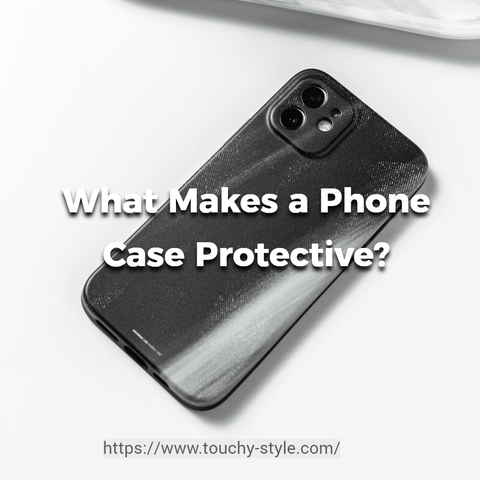
Phones have become an integral part of our lives, and we carry them with us everywhere we go. As a result, they are susceptible to accidental drops and impacts that can cause damage to their delicate components. That's where phone cases come in. A phone case can provide much-needed protection for your device, ensuring that it remains in good condition for longer. But what makes a phone case protective? Let's explore some of the key features that make a phone case truly protective.
-
Material Matters
The first thing to consider when choosing a protective phone case is the material it is made from. Some of the most common materials used for phone cases include silicone, TPU, polycarbonate, and leather. Each of these materials has its own strengths and weaknesses in terms of protection. Silicone and TPU are both soft and flexible, which makes them great shock absorbers. Polycarbonate, on the other hand, is a hard plastic that is more durable and offers better protection against scratches and cracks. Leather cases are also popular, but they may not provide as much protection as the other materials mentioned.
-
A Good Fit
Another essential aspect of a protective phone case is how well it fits your device. A good phone case should fit snugly around your phone, leaving no gaps or spaces where dirt, debris, or water can seep in. If a case is too loose, it won't provide much protection against impacts, and if it's too tight, it can put pressure on your phone and cause damage.
-
Drop Protection
The most common reason for needing a protective phone case is to prevent damage from drops. A protective phone case should have adequate drop protection, which means it should be able to absorb the shock of an impact and prevent your phone from getting damaged. Some phone cases have special features like air pockets, which can help absorb shock and prevent damage to your device.
-
Screen Protection
In addition to drop protection, a good phone case should also provide screen protection. This means that the case should have a raised lip or beveled edge that extends beyond the screen of your phone, so that if you drop it face-down, the case will absorb the impact instead of your screen. Some phone cases also come with a built-in screen protector, which is an added layer of protection against scratches and cracks.
In conclusion, a protective phone case is an essential accessory for anyone who wants to keep their device safe from everyday wear and tear. When choosing a protective phone case, it's important to consider the material, fit, drop protection, and screen protection. By taking these factors into account, you can ensure that your phone remains in good condition for longer, and you can enjoy using it without worrying about damage.


